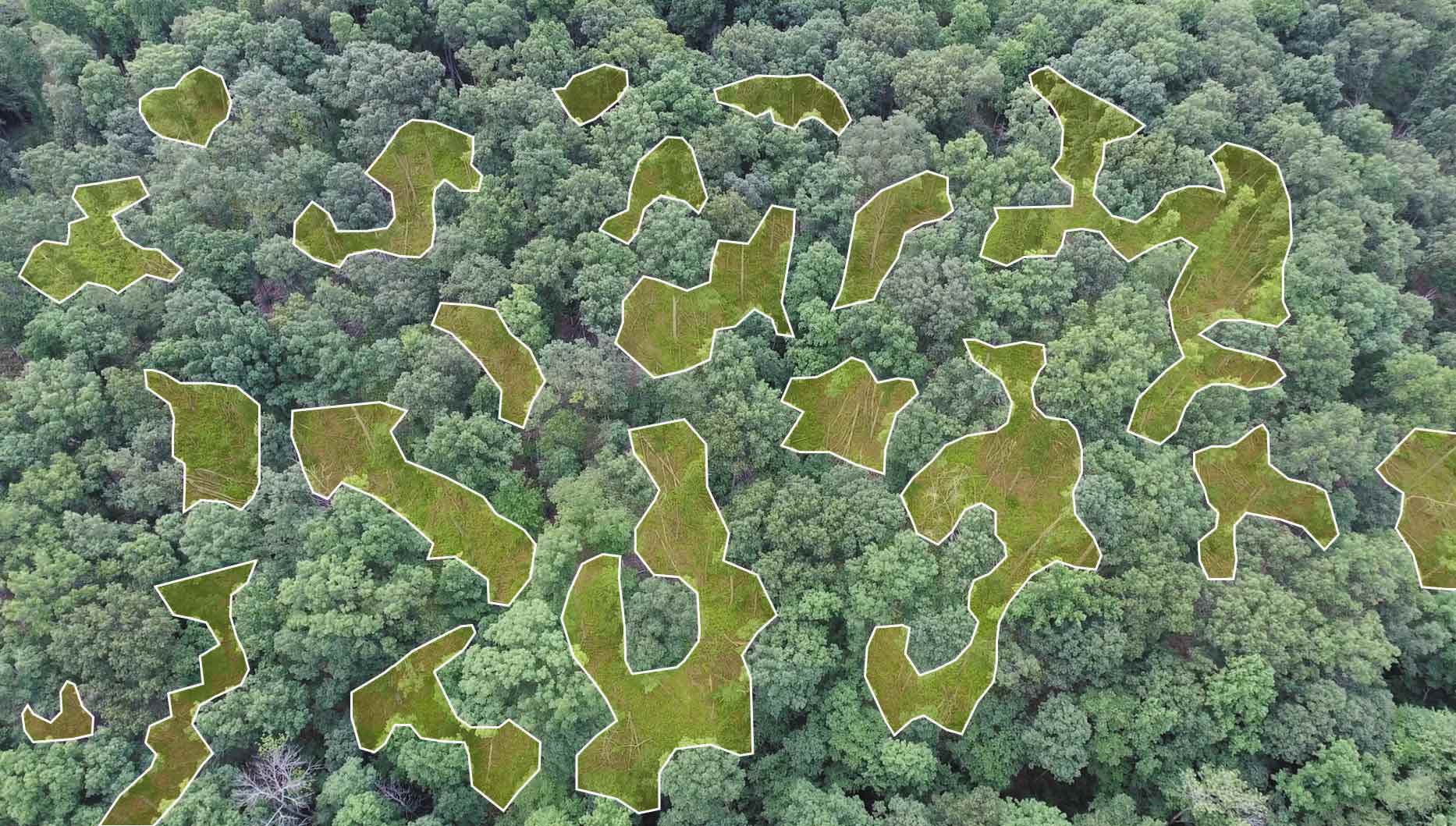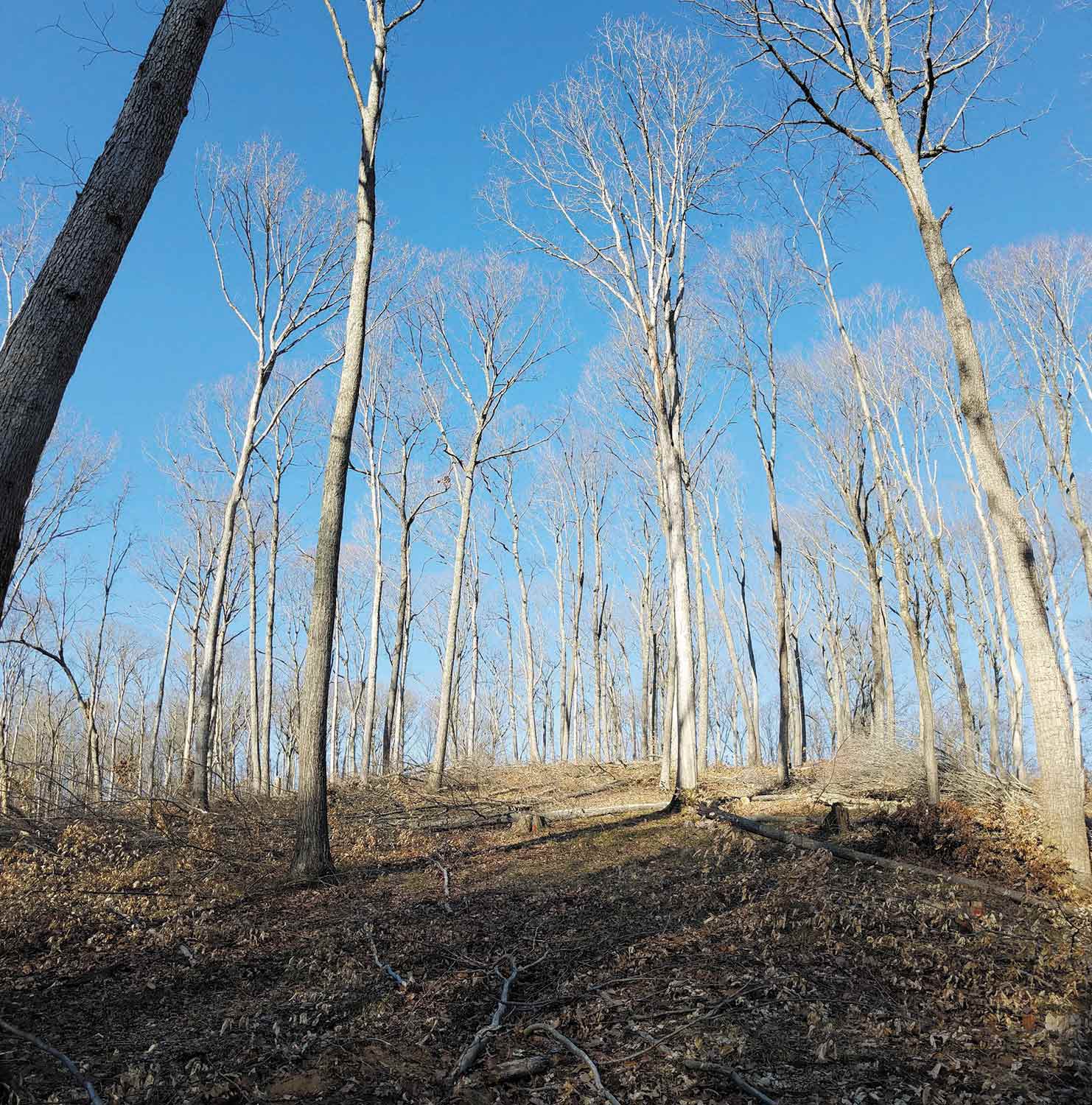 An aerial view of shelterwood harvest showing the canopies of the large residual trees and the gaps created between the trees to allow sunlight to strike the ground. Photo: C.Neggers, TNC Sidebar: What is a Shelterwood Harvest?
An aerial view of shelterwood harvest showing the canopies of the large residual trees and the gaps created between the trees to allow sunlight to strike the ground. Photo: C.Neggers, TNC Sidebar: What is a Shelterwood Harvest?
A shelterwood harvest intentionally leaves many of the largest and best trees in the woods as seed trees and future timber, while at the same time thinning heavily, even in the mid-story. One-third of the mature trees might be removed during harvest. This creates abundant space around the remaining trees and allows much sunlight to strike the ground, encouraging a new generation of trees to start.
While the shelterwood technique is still an uncommon method of managing hardwood timber, research has shown that a shelterwood can benefit some forest songbirds, including Cerulean Warbler, Hooded Warbler, Kentucky Warbler, and Eastern Towhee. Forest bats may benefit as well.
A recent grant from the Alcoa Foundation to The Nature Conservancy will promote the practice of shelterwood harvesting and enhance songbird conservation on properties managed by Nature Conservancy foresters in southern Indiana. For more information contact Dan Shaver at dshaver@tnc.org. Mature oak stand following a shelterwood harvest and midstory removal. The remaining high quality trees are widely spaced providing room for sunlight to strike the ground and provide good foraging opportunities for Cerulean Warbler. Photo: C. Neggers, TNC
Mature oak stand following a shelterwood harvest and midstory removal. The remaining high quality trees are widely spaced providing room for sunlight to strike the ground and provide good foraging opportunities for Cerulean Warbler. Photo: C. Neggers, TNC
